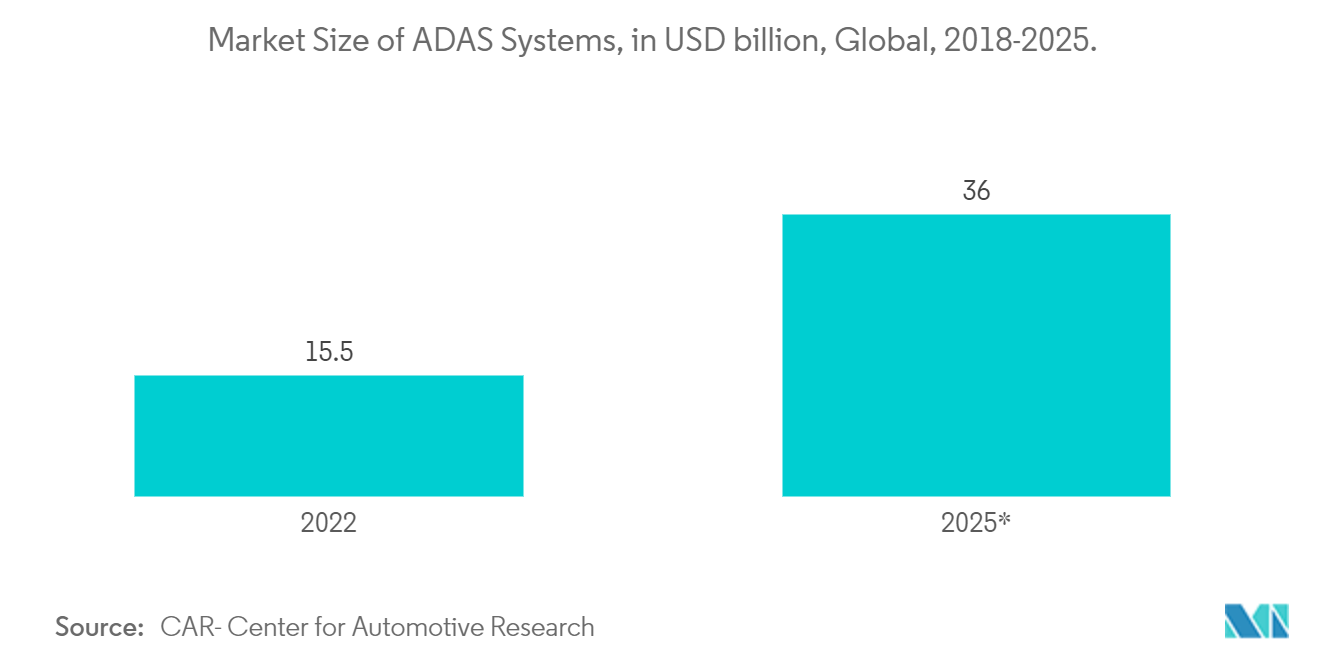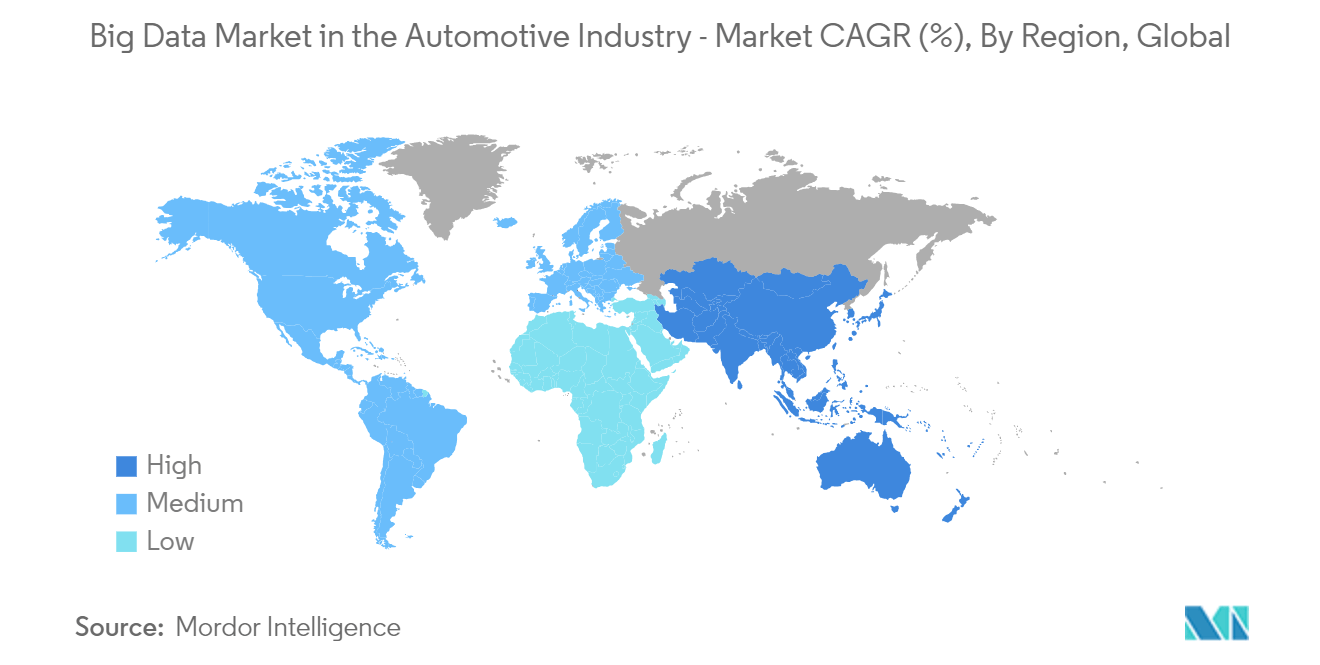Market Trends of Big Data Industry In The Automotive Industry
Product Development, Supply Chain and Manufacturing Segment Accounts for a Major Share
- Big data is one of the key drivers of productivity and efficiency for manufacturers in the contemporary technology-driven corporate climate. There has been a significant increase in the number of data points for the automobile industry due to the rapid adoption of sensors and connected devices, as well as the facilitation of machine-to-machine (M2M) communication.
- While the car industry has made significant strides in adopting data analytics in areas such as manufacturing, marketing, and supply chain, the utilization of data generation and analysis within the product itself has been relatively nascent. However, with the increasing popularity of the Internet of Things (IoT) and advancements in computing, more cost-effective data collection methods are beginning to emerge.
- A significant change in the user experience may result from connected automobiles. According to the Associated Press, by 2023, it is predicted that 76.3 million connected cars will be produced worldwide by the automobile industry. By offering gear and software, you can connect them to the cloud so they can generate data and gain useful insight. When automotive companies get access to real-time, on-the-road data, it speeds up product development and may revolutionize how they monitor performance, maintain product quality, and ensure safety.
- The largest American automaker, General Motors, was a pioneer in the use of big data and analytics in the automotive sector. These days, sensors and central processing units (CPUs) in cars are the norm. With sensors and telematics within the automobile as its focus, General Motors can save a lot of money while also improving the safety and dependability of its vehicles. For instance, DataFlair claims that telematics is like a gold mine because it offers significant savings of up to USD 800 per vehicle.

Asia Pacific Segment is Expected to Grow at a Significant Rate Over the Forecast Period
- Of all the regions, the Asia-Pacific has the largest population. Asia-Pacific is regarded as one of the biggest markets for the automotive industry due to the region's growing urban population and rising purchasing power.
- Around 965,000 passenger cars and 216,000 commercial vehicles were sold in China in April 2022, according to the China Association of Automobile Manufacturers (CAAM); these figures reflect a 48% and a 42% reduction, respectively, from the previous month. Such massive vehicle sales are anticipated to present a growth opportunity for the sector under investigation.
- Businesses are working together to grow their presence in numerous areas to increase their market share, penetrate diverse markets, and diversify their product offerings. For instance, in June 2022, Nippon Telegraph & Telephone (NTT) and Toyota Motor collaborated to develop connected cars to collect and share data. Yo Honma, the chief executive of NTT's data networking and data division, stated in an interview that the business would actively investigate mergers and acquisitions to hasten its drive into foreign markets. According to Honma, the company could spend as much as JPY 400 billion (USD 3 billion) on deals over the next four years.
- For instance, Sagawa Express Co. of SG Holdings Co. debuted a prototype of its first electric vehicle in June 2021 as part of its goal to electrify all small delivery vans. This vehicle was constructed in collaboration with the Tokyo startup ASF. The biggest delivery service in the country intends to switch to electric vehicles by 2030 and reduce its CO2 emissions by 28,000 tonnes yearly. These changes should make it possible for the market under study to expand.


